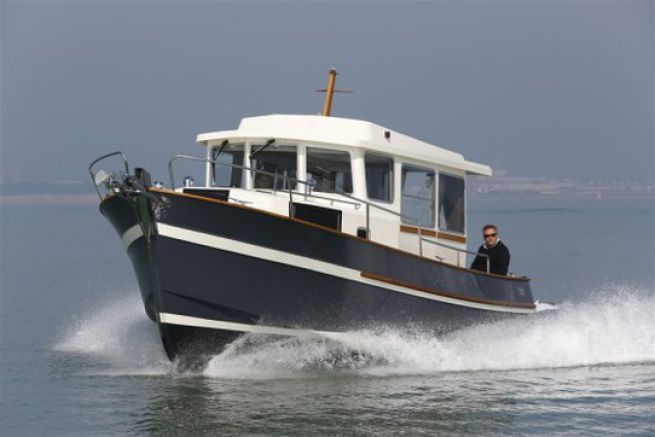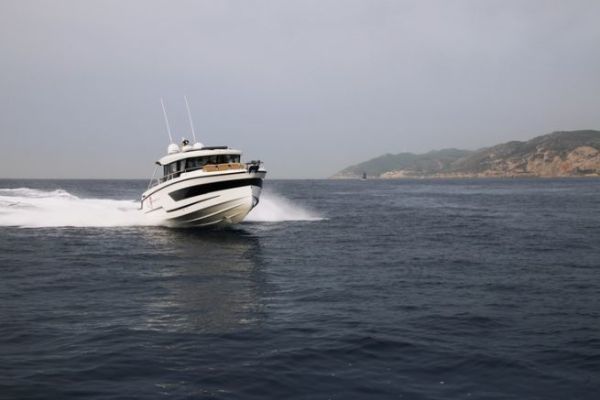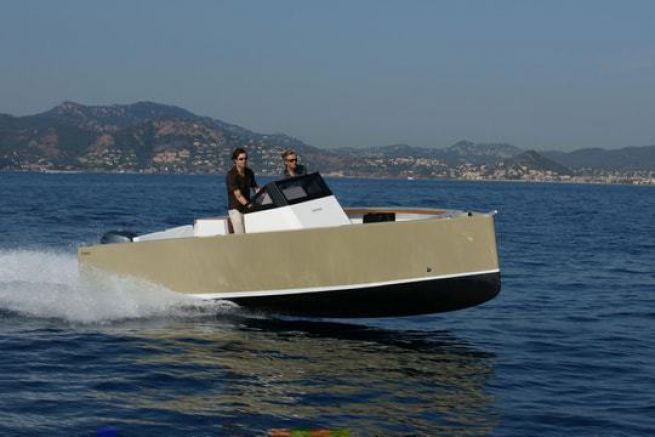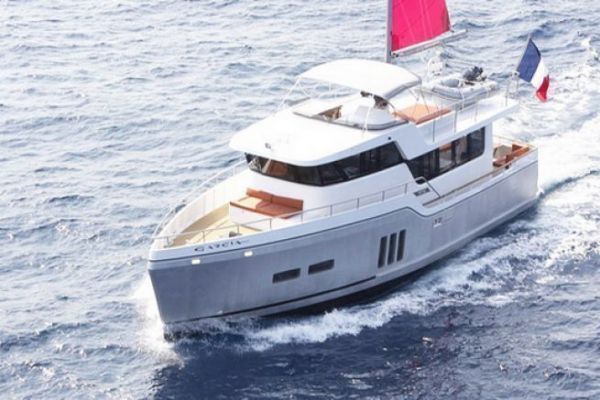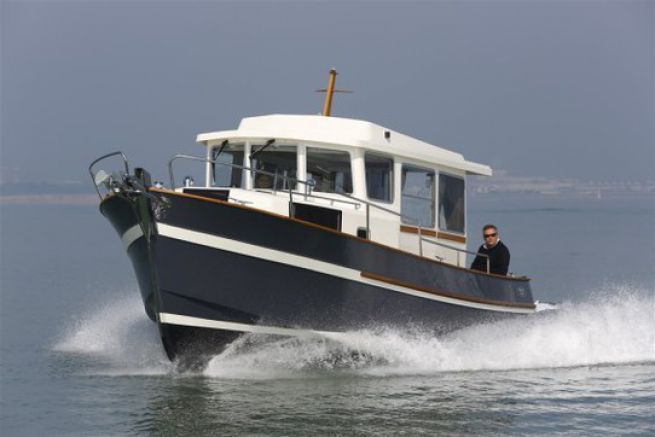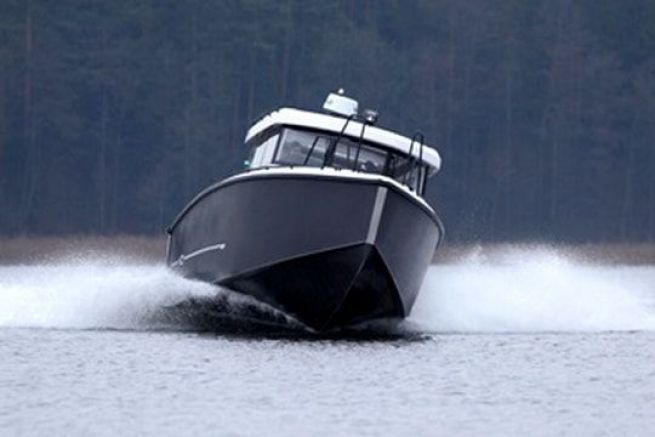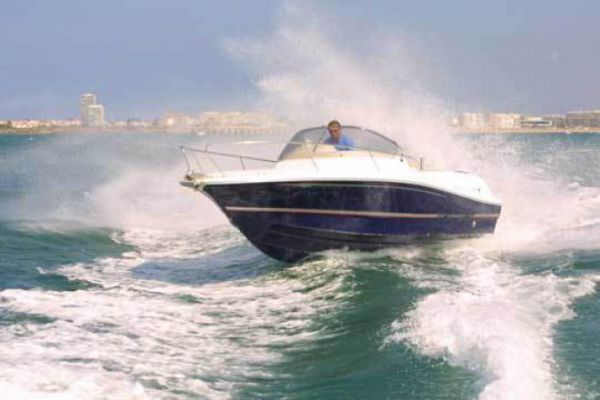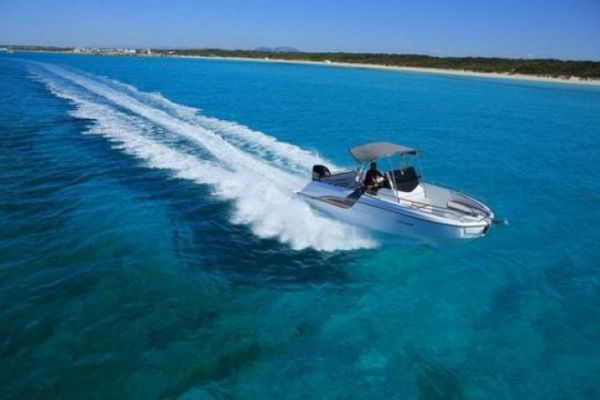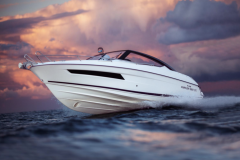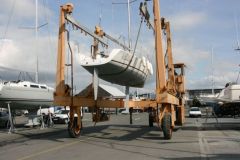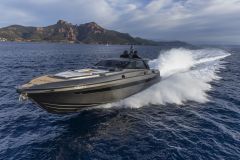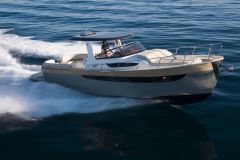A hybrid between a displacement hull and a planing hull
The semi-planing hull is also called a semi-displacement hull. It combines the characteristics of the displacement hull and the planing hull to find a compromise. It has a deep V in the front part, which gradually softens towards the back. The boat can then sail in a semi-degree position, thanks to its bow which cuts through the waves, while its rear shape offers nevertheless a good lift. It has a good sea keeping, even in strong sea conditions, while guaranteeing good speeds.
These high-performance hulls in rough seas are used in particular for SNSM rescue boats. They are also found on large launches, as they allow to reconcile performance and habitability, by supporting high displacements.
Intermediate speeds
As with the displacement hulls, the bottom of the hull is equipped with a long shallow keel to improve heading. With a semi-planing hull, the speed of the boat is higher than that of a displacement hull, for an acceptable power.
This type of hull allows for comfortable sailing, good sea keeping with good stability. Its performance is optimized at intermediate speeds, slightly exceeding the hull speed. It is then more efficient than a planing hull. On the other hand, the semi-planing hull is particularly sensitive to weight, being optimized for a given trim and displacement.
Naval architect Pierre Delion summarizes: "The semi-planing hull is the grey area between the two regimes: displacement hull and planing hull. With extra power, it can glide, like the Rhea or some trawlers" .
Benefits:
- performance without too much power
- comfort
- ability to navigate in heavy seas
Disadvantages:
- slower than a planing hull
- weight sensitive

 /
/ 